The Cat o' Nine Tails (1971)
Directed by: Dario Argento
Written by: Bryan Edgar Wallace, Dardano Sacchetti, Dario Argento, Luigi Collo
Starring: Catherine Spaak, James Franciscus, Karl Malden, Pier Paolo Capponi
AKA IL GATTO A NOVE CODE
Italy
AVAILABLE ON LIMITED EDITION DUAL FORMAT BLU-RAY AND DVD: 29th January, from ARROW VIDEO
RUNNING TIME: 112 mins
REVIEWED BY: Dr Lenera, Official HCF Critic
Out for a walk one evening near the advanced medical lab the Terzi Institute, blind puzzle solver Franco Arno and his young daughter Lori overhear a strange conversation in a car between two men. Later that evening a guard is knocked out and the Institute broken into – though nothing appears to be stolen. Hours later, one of the men in the car is pushed to his death in front of a train. Pushy reporter Carlo Giordani reluctantly teams up with Arno to try to solve the crime, and they begin to uncover a web of intrigue as more murders occur….
There was once a time when The Cat O’ Nine Tails was considered by many to be Dario Argento’s weakest effort, and the man himself professed a dislike for it [“too American” he called it, though no American director would have made it the way Argento did], though the weakness of much of his recent output has probably caused it to move up many people’s lists. I have a great fondness for it myself, though much of that may be to do with the fact that it was my first Argento, and a film which set me on a fantastic voyage of discovery through Italian horror and gialli exploring and falling in love with the works of Argento, Lucio Fulci and, most of all, Mario Bava. I do think though that, rather than being several notches down from Argento’s debut feature The Bird With The Crystal Plumage, this follow-up is just as strong a film, even if neither work quite represents him at his best. Its plot does get rather too convoluted for its own good, something which causes the movie to almost bog down around the middle, but for much of the time it’s extremely suspenseful, is full of great set pieces big and small, is packed with quirky characters, and simply oozes directorial style. And it may not be packed with gory violence, but it’s still a brutal, hard edged affair.
The Bird With The Crystal Plumage was a big hit especially in the US, and scores of Italian directors and producers tried to emulate its success. American company National General Pictures put up part of the money for what was a German, French, Italian and American production which they wanted to be an imitation of Bird, though Argento was supposedly inspired to make Cat by watching The Spiral Staircase with its close-ups of the killer’s eye, and main screenwriter Dardano Sacchetti by a recent theory [also employed in Twisted Nerve, but since discredited] that people made up of the XYY chromosome were criminals. Sacchetti repeated a scene from Raymond Chandler’s The Big Sleep almost verbatim for when Giordani first meets Anna. The use of two American stars meant that the budget was twice that of Bird. The film was shot on location in Turin, Berlin for some establishing shots, and at Cinecitta Studios in Rome. During the filming of some of the night time exterior scenes, Karl Malden actually made some of the crew members and onlookers think he was blind for real. The film was held up for two months because producer Alfredo Lombardo disliked it and wanted reshoots, but Argento, backed up by his producer father Salvatore, stood his ground. He did wisely cut a happy coda, leaving it ambiguous s to whether one major character was alive. It did well in Italy but not so much elsewhere, Nationl General not really having the clout to set up a major release. They also cut 20 minutes, which may well have sped up the pacing but may have made parts of the story incomprehensible if the edits weren’t done well.
The opening pan across some rooftops until we overlook a ledge immediately disorientates the viewer as he or she wonders where the hell we are, and people watching in 1971 would have probably been even more disorientated by the lengthy sequence where the killer breaks into and wonders about the Terzi Institute, done entirely through POV camerawork. Not long after this film’s release, adopting the killer’s viewpoint in slashers became very common, but it hadn’t been seen that much before [Peeping Tom perhaps being the most notable example] and certainly not for this length. The technique is used hell of a lot in Cat – even a car chase mostly utilises it – and sometimes very cleverly. The guy in the car who we are given a view of, Dr. Calabresi, somebody who seems to know what’s going on, goes to meet someone on a train platform. The camera seems to be observing Calabresi as his back is turned, and sometimes looking left and right, adopting Calabresi’s view point as he’s waiting for this other person. However, suddenly Calabresi walks towards the camera and we realise it’s the killer we’ve been watching, a killer who shoves Calabresi under a train. Amusingly, some papparazzi gathered to photograph the arrival of a glamorous actress are distracted momentarily by the killing before quickly turning their attentions to the starlet patiently waiting for their lenses. This is a superbly staged sequence that looks forward to Argento’s even more brilliant murder in the square in Tenebrae as well as being clearly influenced by Alfred Hitchcock in the way it’s set up, but then the shadow of the Master of Suspense is all over this film more than any other Argento. Another good example of this is the great humorous scene where Giordani, after having seen a corpse with its face slashed with a razor, goes for a shave and the barber waves his razor about while going on about how the newspapers think that a crazy barber may have done the killing.
Lori reads the newspaper for Arno about Calabresi’s “accidental death,” describing the picture and telling him that Giordani wrote the article. Arno was once a reporter himself and wonders if the photograph was cropped. Sure enough, the negative reveals a moving hand and arm in the corner, but then the photographer is killed. Arno and Giordani become a great team as they try to find out what’s going on. It seems that somebody has the XYY chromosome and could be trying to kill those who know it, but that’s only scratching the surface. There’s industrial espionage, homosexual blackmail, possible incest, kidnapping, and a whole lot else as Giordani and Arno resort to breaking and entering, and even grave robbing. I managed to closely study the plot this time [not an easy thing] and there do seem to be a couple of loose ends. It almost becomes too much after a while and the script loses focus at times, with some vignettes [a comical car chase] and even subplots that could have been removed. This is the baggiest of Argento’s ‘animal trilogy’, but there’s still usually something to enjoy in every scene, be it the burglar who we see winning an insult competition or the cop who goes on about his wife’s cannelloni [ both examples of a lightness and humanity which often tended to be lost in the director’s later more ambitious and shocking movies], and the plot does try to make as many people as possible into suspects, though the eventual reveal of the killer fails to startle as it’s one of the script’s least developed characters. Along the way Giordani has a fling [as usual, Argento depicts sex very tastefully and totally unerotically] with Anna the daughter of the head of the Terzi Institute, though Catherine Spaak just seems to be there to model ghastly 70’s Italian fashions. Eventually we get to a good rooftop brawl, a cringe-inducing death where the victim’s hands become bloody as he slides down a lift cable, and a final moment which appropriately closes the proceedings with dark irony.
The two rope strangulations are pretty grim – Argento even shows us saliva emitting from one victim’s mouth – though some may find more unpleasant the sight of a child being slapped and bound and gagged in a room with rats. The Terzi Institute, which virtually everything revolves around, is the first of Argento’s great buildings which harbour big secrets, wisdom but also evil. Its clinical whiteness is often echoed in the design elsewhere, though we also get some plain outlandish things to look at like somebody’s wallpaper which consists of what look like a cross between jellyfish and spatters of blood. There are also some very odd scene transitions where we see flashes of the next scene before we properly go into it. Even Giordani’s discovery of a body is shown in a brief one second flashback. And sadly there’s also a terrible continuity error where day suddenly becomes night. Ennio Morricone’s score sometimes has to work overtime to keep the tension going. A lengthy cemetery walk is a definite highlight of the film, but I reckon that if you removed the music it wouldn’t be anything special. The score has a somewhat different sound to it than the score to Bird but, aside from the lullaby theme, is similarly avant garde. It comprises largely of simple note patterns over which increasingly wild improvisation takes place. It’s hugely effective throughout and a fine example of how music can greatly increase a film’s effect.
James Franciscus never became a big star, but I’ve always liked his pleasant manner, and he puts it to good use here. Of course Karl Malden, expertly evoking his character’s disability without overdoing it, is the most interesting of the two to watch. He may have been slumming it but this doesn’t show, and the two stars have a great chemistry, though the heart of the film is the unsentimental but still cute relationship between Arno and Lori. There really is a lot to like in The Cat O Nine Tails and its stodgy passages, which usually exist because they tried to cram too much in, are easily atoned for. Argento may have gone on to make wilder, scarier, more inventive work, but there’s something about this very Agatha Christie-influenced giallo that makes for a very pleasing, enjoyable watch nonetheless. Oh, and yes, the bottle of J & B is present and correct, but you really have to look out for it, as its appearance is much more discreet than normal.
I don’t own Arrow’s previous Blu-ray of this film, but I do own the Anchor Bay DVD, and the difference between that and this release is immediately apparent. I compared a few bits, and the latter looks so good that I noticed flaws in the DVD which I didn’t used to be aware of, like haziness during the cemetery sequence. I’d always assumed it was intended. This is a brilliantly clean looking and detail filled presentation that I can’t fault except for perhaps some performer’s faces looking a bit too red – but it’s quite possible that’s how they originally looked. With the exception of Lori, I’ve never minded the dubbing much on this film, and Franciscus and Malden did do their own, though the Italian language track, which is a little quieter than the English one, is still worth checking out to hear the original voices of many of the cast.
Arrow have opted not to retain their previous special features, but the selection of all new special extras is most definitely enough. First up is another excellent commentary by Alan Jones and Kim Newman. What with Jones’s in-depth knowledge of Argento [he’s been on most of his film sets and has spent much time with him], and Newman’s more wider film knowledge, this two are always a great pair to listen to but this could be their best effort yet, often light hearted and not afraid to laugh at the film be it the many wigs or dodgy bits of dialogue, but also packed with fascinating info. We find out, for example, that Franciscus had a contract which said he couldn’t work after 6pm – maybe that had something to do with his sudden career decline. Great stuff with no pauses but also without a dull moment.
First up among the featurettes is Nine Lives, a 16 minute interview with Argento. He still dismisses the film several times as being “too American”, and skims through the creation of the project, but does cover a fair bit of other ground, from filming certain scenes to going through some of his collaborators. He says that he wanted Tina Omosi for the Catherine Spark part, and, perhaps most surprisingly, he says that working with Malden was “one of the best experiences of my artistic life”. The Writer o’ Many Tails has Sacchetti talk for 34 minutes in great depth [and sometimes going off on tangents] about how his career begun, and the row between him and Argento, who took credit for the screenplay. I’ve never totally understood what happened with that so thanks for Dardano for explaining it, especially as Argento never mentions the issue. Sacchetti says that Argento became “a terrifying despot” on set after he became famous and, perhaps correctly, says that Argento was never able to reinvent himself and got stuck in a rut. Child Star has Cinzia De Carolis reminiscing for 20 minutes, though for much of the time she seems to struggle to remember much except to say how nice people were. It’s still nice to see her though. It seems that her main career became voice dubbing.
The 15 minute Giallo In Turin has production manager Angelo Iacono say how his first meeting with Argento, with whom he worked six more times, was “love at first sight”, though he mostly goes on about how nice everyone was. As with Carolis, nice to have him talk though. And finally we get an English version of the last couple of pages of the script before Argento curtailed the ending, with appropriate photographs and one German lobby card containing an actual still of the final scene. It’s interesting to read, though Argento was wise to cut it.
And there we have it. The Doc thoroughly recommend this terrific and definitive release of one of Argento’s most underrated movies. Completists who own some of the previous releases may want to hang on to them for the extras, though I would imagine all the information contained on them can be found on the new release.
LIMITED EDITION CONTENTS:
*Brand new 4K restoration of the film from the original camera negative
*High Definition Blu-ray (1080p) and Standard Definition DVD presentations
*Original mono Italian and English soundtracks (lossless on the Blu-ray Disc)
*Newly translated English subtitles for the Italian soundtrack
*Optional English subtitles for the deaf and hard of hearing for the English soundtrack
*New audio commentary by critics Alan Jones and Kim Newman
*New interviews with co-writer/director Dario Argento, co-writer Dardano Sacchetti, actress Cinzia De Carolis and production manager Angelo Iacono
*Script pages for the lost original ending, translated into English for the first time
*Original Italian and international theatrical trailers
*Reversible sleeve featuring original and newly commissioned artwork by Candice Tripp
*Double-sided fold-out poster
*4 lobby card reproductions
*Limited edition booklet illustrated by Matt Griffin, featuring an essay on the film by Dario Argento

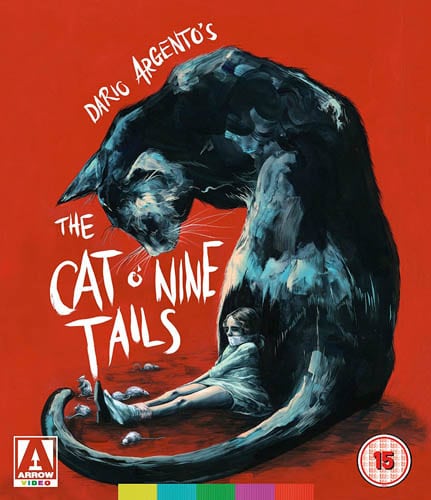
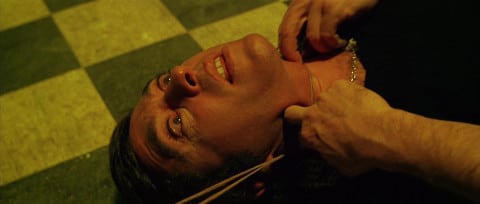
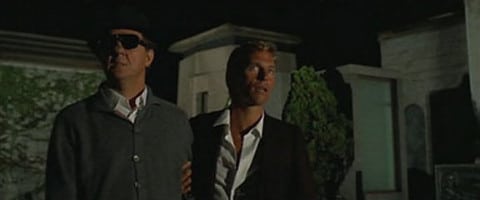




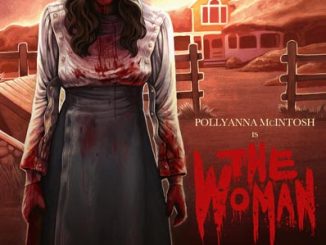
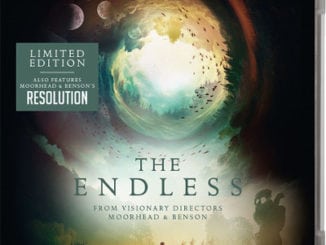
Be the first to comment